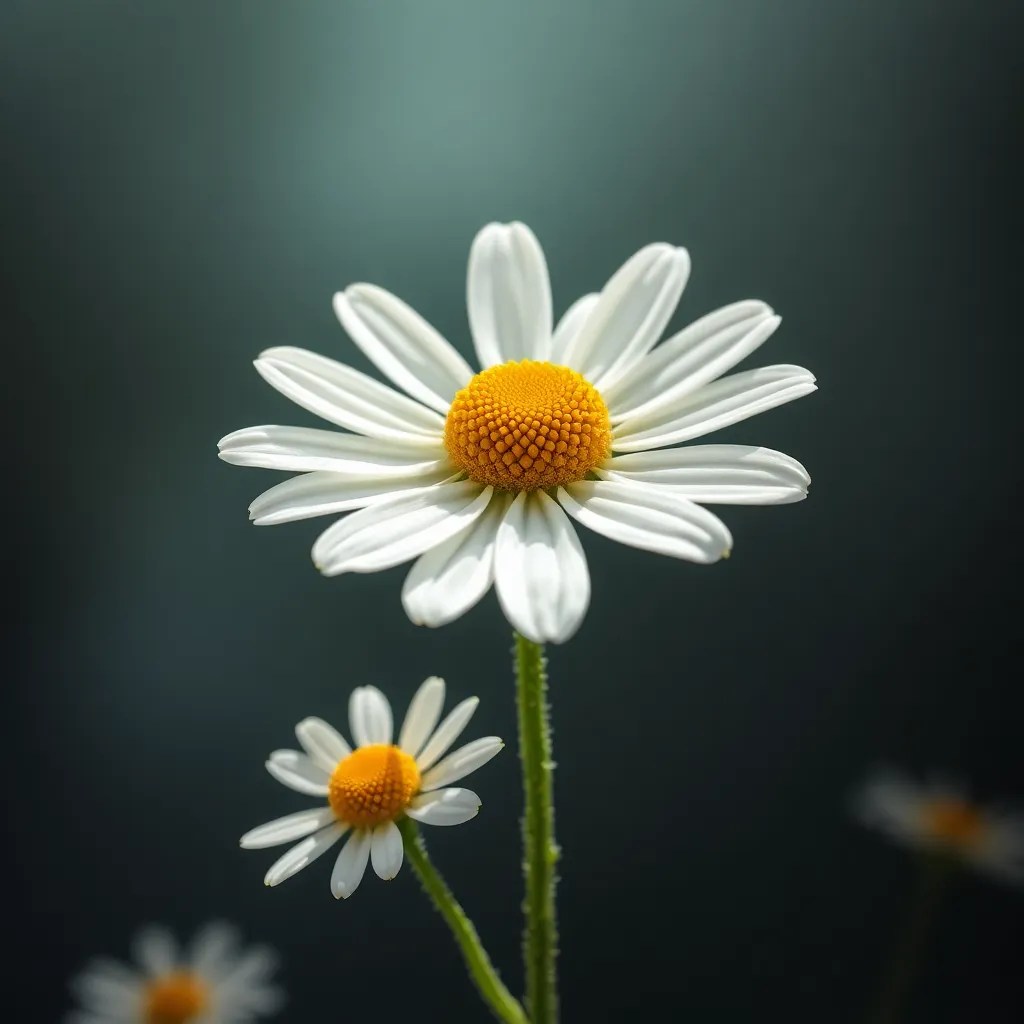The Symbolism of the Sacred Chamomile Flower
I. Introduction
The chamomile flower, with its delicate white petals and golden center, has long been celebrated for its beauty and soothing properties. This humble flower, often found in gardens and meadows, carries a rich tapestry of symbolism across various cultures and historical contexts. Understanding the importance of symbolism in plants allows us to appreciate their deeper meanings and the roles they play in human experiences. This article aims to explore the historical significance, botanical characteristics, cultural symbolism, spiritual connections, literary representations, and contemporary uses of the sacred chamomile flower.
II. Historical Significance of Chamomile
A. Chamomile in Ancient Cultures
Chamomile has been revered since ancient times, with records dating back to the Egyptians, who used it to honor their sun god, Ra. It was believed to have protective qualities and was often placed in tombs. The Greeks and Romans also valued chamomile, using it in their medicinal practices and as a flavoring agent in beverages.
B. Medicinal Uses Throughout History
Chamomile has been utilized for its medicinal properties for centuries. Some of its notable uses include:
- Digestive aid
- Calming anxiety and promoting sleep
- Soothing skin irritations
- Reducing inflammation
These historical medicinal applications have cemented chamomile’s status as a vital herb in traditional medicine systems.
C. Chamomile in Folklore and Mythology
Throughout various cultures, chamomile has also found its place in folklore and mythology. Many tales depict it as a flower of love and fidelity. In European folklore, chamomile was often associated with good fortune and was used in love potions.
III. Botanical Characteristics of Chamomile
A. Description of the Chamomile Plant
The chamomile plant is a member of the Asteraceae family and is characterized by its small, daisy-like flowers. The two most common types are:
- German Chamomile (Matricaria chamomilla) – Known for its strong aroma and medicinal properties.
- Roman Chamomile (Chamaemelum nobile) – Valued for its low-growing habit and ornamental qualities.
B. Varieties of Chamomile and Their Symbolism
Each variety of chamomile carries its own symbolism. For instance:
- German Chamomile is often seen as a symbol of healing and protection.
- Roman Chamomile represents humility and patience.
C. Growth and Habitat of Chamomile
Chamomile thrives in well-drained soil and is commonly found in temperate regions. It blooms in the summer, attracting various pollinators and contributing to biodiversity.
IV. Symbolism in Different Cultures
A. Chamomile in European Traditions
In Europe, chamomile is traditionally associated with youth and vitality. It is often used in folk remedies to promote health and well-being.
B. The Flower’s Role in Native American Practices
Native American tribes have utilized chamomile for its calming effects. It is often included in herbal blends for ceremonies aimed at promoting peace and relaxation.
C. Symbolic Meanings in Asian Cultures
In Asian cultures, chamomile symbolizes purity and serenity. It is often used in teas that are believed to bring clarity and calmness to the mind.
V. Chamomile and Spiritual Connections
A. Chamomile in Herbalism and Spirituality
Chamomile plays a significant role in herbalism, where it is used to create healing tinctures and teas. It is also a powerful herb in spiritual practices, believed to enhance meditation and promote inner peace.
B. The Flower as a Symbol of Peace and Tranquility
Due to its calming properties, chamomile is often regarded as a symbol of peace and tranquility. It is used in various rituals to create a serene environment.
C. Chamomile in Rituals and Ceremonies
Chamomile is frequently included in cleansing rituals and ceremonies aimed at inviting positive energy and dispelling negativity. Its presence is thought to foster a sense of calm and harmony.
VI. Chamomile in Literature and Art
A. Representation of Chamomile in Poetry and Prose
Chamomile has inspired numerous poets and writers, often symbolizing love, comfort, and healing in their works. Its gentle nature and soothing qualities make it a favorite subject in literature.
B. Artistic Depictions and Their Meanings
In art, chamomile is often depicted in still-life compositions, symbolizing simplicity and the beauty of nature. It serves as a reminder of the small joys in life.
C. Chamomile’s Influence on Modern Storytelling
Modern storytelling continues to celebrate chamomile, representing themes of healing and resilience. Its presence in narratives often highlights the importance of self-care and well-being.
VII. Contemporary Uses and Symbolism
A. Chamomile in Modern Herbal Remedies
Today, chamomile remains a popular choice in herbal remedies, widely used in teas, essential oils, and topical applications. Its calming effects are sought after in the wellness industry.
B. The Flower’s Role in Wellness and Self-Care
With a growing emphasis on mental health and self-care, chamomile has become a staple in many wellness routines. Its soothing properties are utilized in relaxation practices, including aromatherapy and baths.
C. Current Trends in Chamomile Symbolism
In contemporary culture, chamomile symbolizes self-care, nurturing, and the importance of slowing down. It serves as a reminder to take care of oneself amidst the chaos of modern life.
VIII. Conclusion
In conclusion, the sacred chamomile flower holds profound significance across cultures and history. Its symbolism encompasses healing, peace, and tranquility, making it a cherished plant in both traditional and modern practices. As we continue to explore and appreciate the cultural importance of chamomile, it is essential to preserve its legacy and recognize its enduring impact on our lives.




